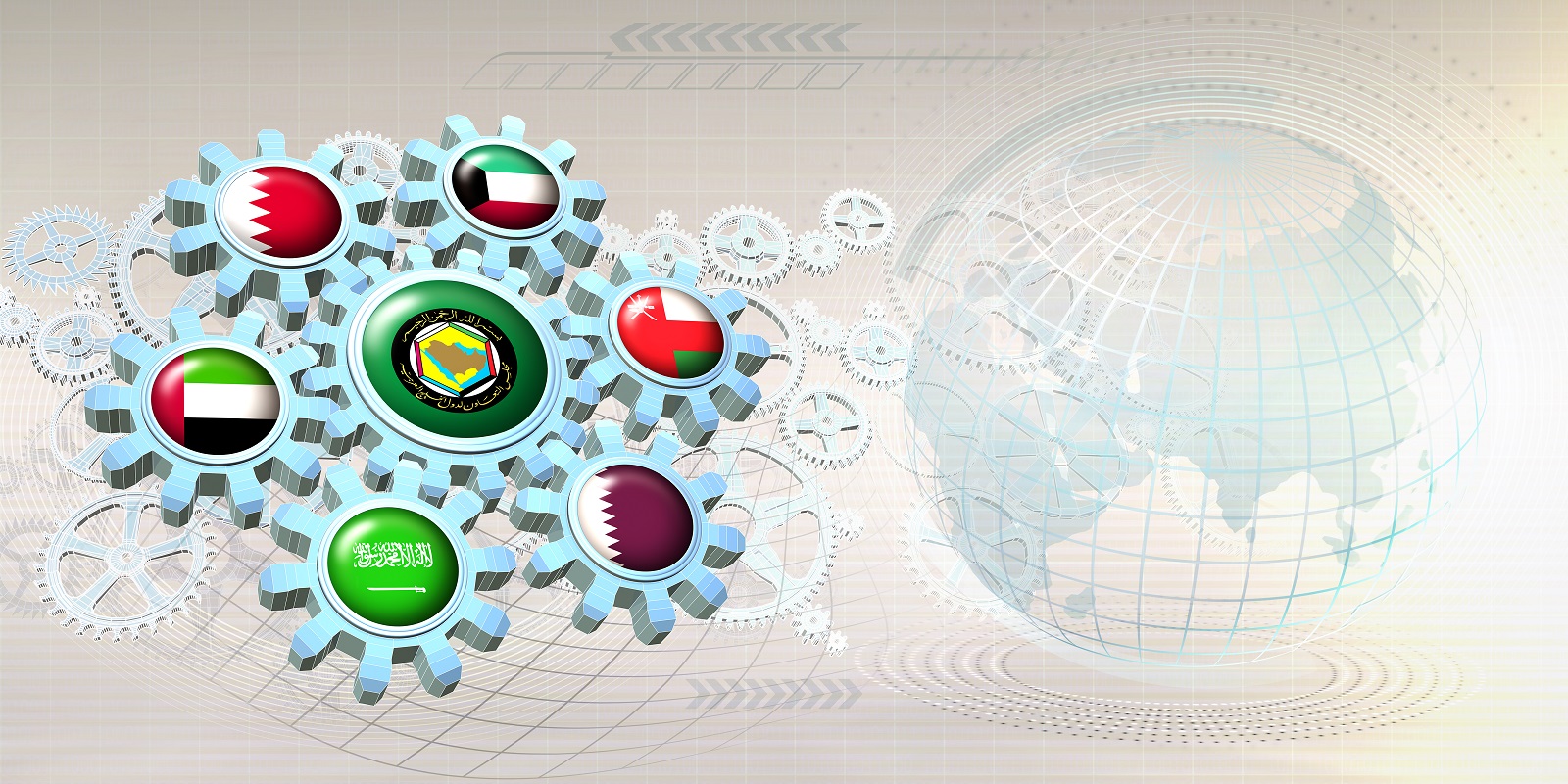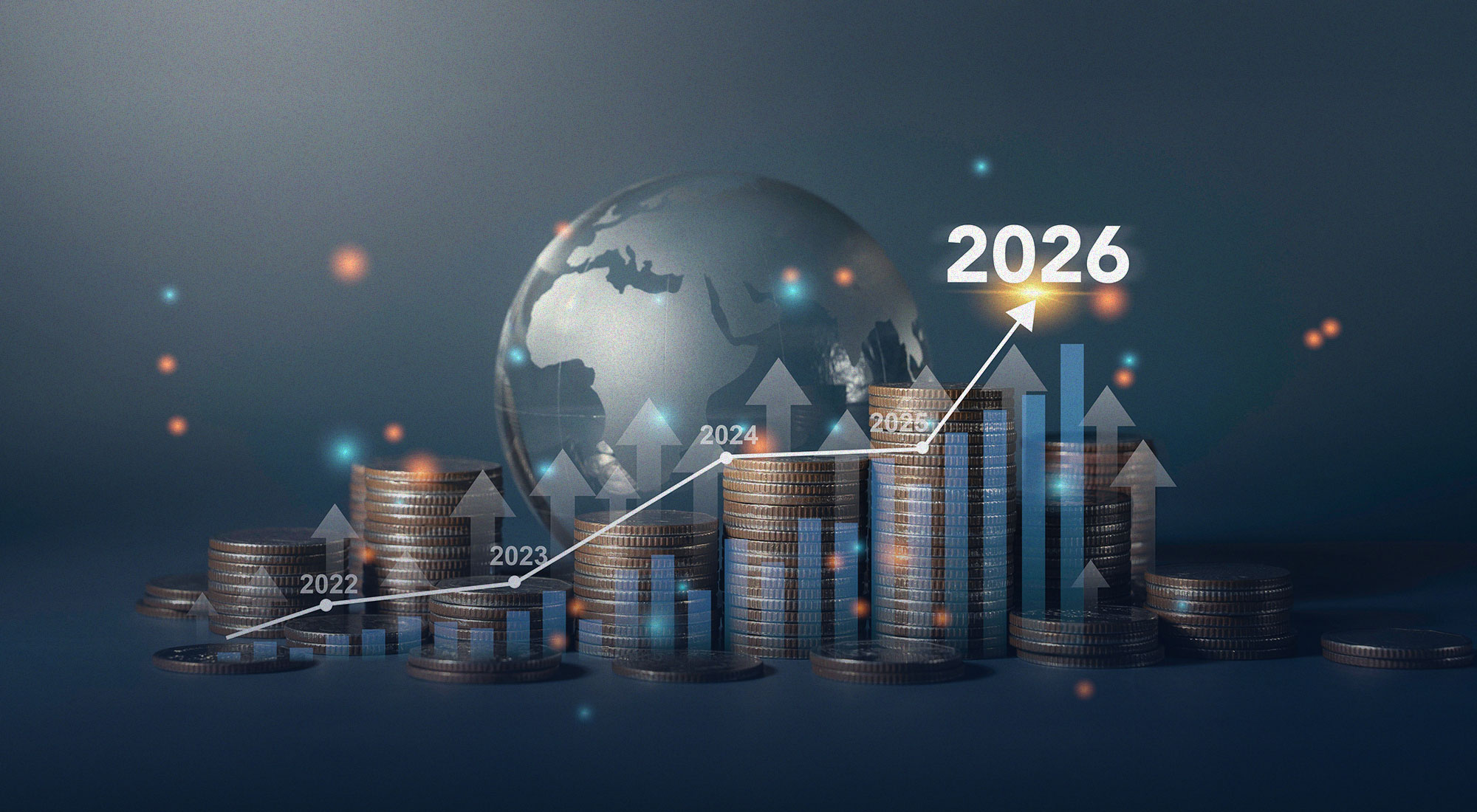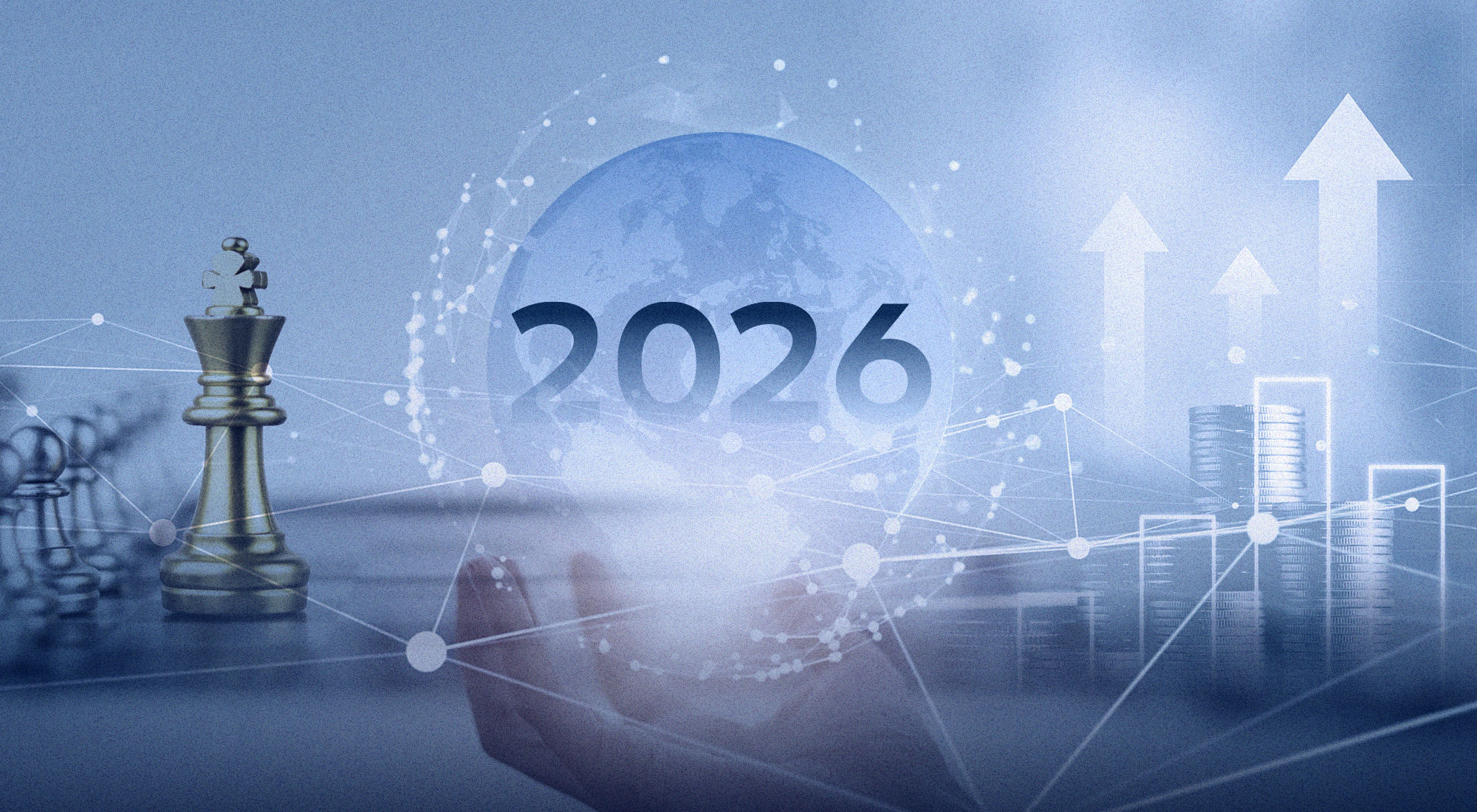Impact of Foreign Direct Investment on HDI in GCC
Foreign direct investments (FDI) are investments made by regulating business or ownership by an entity from another country. It is a form of direct control easily distinguishable from a foreign investment portfolio due to this characteristic. The human development index (HDI) is a statistic composite index of three significant indicators: education, life expectancy, and per capita income, used to measure human development[1] (Hamdi & Hakimi, 2021). Each society in every country prioritizes health, growth, and education; therefore, government policies focus on improving these components: as a result, improving the well-being of its citizens.
The inflow of Foreign Development Investment (FDI) into host countries brings considerable benefits, such as a direct external source of capital, the transfer of advanced technologies, and better management practices. Capital is regarded as the driving force of economic growth and development, and hence the FDI bringing in the capital in the countries allows further economic growth and development[2] (Mollaesmaeili et al., 2012). Notably, the Human Development Index (HDI) has been a fundamental gauge of a country’s economic development. The HDI is primarily a statistical tool used to measure the overall achievements regarding social and economic dimensions. FDI impacts the HDI in the Gulf Cooperation Countries (GCC) such as Saudi Arabia and United Arab Emirates (UAE). It is essential that an understanding of the effects of FDI on human development shown through the HDI is done the same way the assessments are done concerning economic growth.
FDI has been a significant source of private capital in developing countries since the 1990s. According to research, in 2009, more than half of the world’s FDI was channeled to developing countries[3] (Ngo, 2021). There is a solid and positive relationship between FDI and HDI; however, according to Ngo (2021), these positive outcomes are not always guaranteed. The bi-directional relationships linking HDI, FDI, and growth exist. For GCC, such as Saudi Arabia and the United Arab Emirates, it is the role of the government to act as a catalyst for the FDI-HDI nexus. Government bodies should be well aware of this relationship and ensure that growth persists economically, socially, or politically. This ensures that its citizens enjoy decent living standards and long healthy lives.
Most GCC is rich in natural resources such as oil. These resources prompt their governments to focus on good FDI that exploits these resources and contributes to local human capital development. As a result, Saudi Arabia and UAE governments ensure that their citizens have a decent living standard. According to Alalshiekh (2018), FDI in developing countries is associated with direct and indirect impacts. The direct impacts include; increased employment (a positive impact on the labor market), supply of financial capital to these countries, increased productivity, and higher wages. On the other hand, the indirect impact (spillovers) are knowledge and skill transfer, productivity spillovers, and technology supply[4] (Alalshiekh, 2018). Countries such as the UAE and the Kingdom of Saudi Arabia (KSA) formulate pro-FDI policies while offering tax incentives to Foreign Multinational Enterprises (FMNE) subsidiaries.
This article intends to examine the effect of Foreign Direct Investment (FDI) on human development measured by the Human Development Index (HDI) for the Gulf Cooperation Council (GCC) countries, specifically Saudi Arabia and UAE. there is also a positive relationship between economic growth, infrastructure, and human capital’s availability and FDI.
Foreign Direct Investment in GCC
FDIs are crucial to developing countries since they offer sources of foreign fund inflow. The inflow of funds aids in growing their economies, consequently elevating them into developed countries. They also are significant in the transition of new technology. The KSA and UAE have increasingly developed policies in line with the anticipations of the international investor. These policies make these countries more conspicuous for foreign investors. GCC countries have drawn inward foreign direct investments (FDI) flows to comprehend the benefits of FDI jobs in their respective countries. In 2001, the FDI inflow in dollars in these countries was 1.5 billion dollars. The inflow increased to 53 billion dollars in 2008 but later decreased to 14 billion dollars in 2015[5] (Al-Matari et al., 2021). It is an indicator that these policies require to be revised to maintain a steady FDI net inflow.
The Covid-19 pandemic has caused a significant decline in FDI. According to research, FDI flows are forecasted to decrease by 40% in 2020. There is a decrease from the current 1.5 trillion-dollar value as of 2019[6]. The decline will likely continue until 2021 and recover in 2022 during the pre-pandemic era. The figure below illustrates the global trends in FDI.

Figure [1]: Global Foreign Direct Investment, Net Inflows (BOP, Current US$)
From Figure 1, it is evident that Global foreign direct investment (FDI) flows have experienced consistent increases since the 2008 financial crisis. Notably, the inflows did decrease slightly in 2012 and 2014 after which they bounced back in the subsequent years. In this decade, massive decline in FDI flows happened in 2018 by almost 20%.
According to Azad and Khatabi (2017)[7], there are five macroeconomic determinants of FDI. These independent variables are derived from the OLI Paradigm developed by Dunning in 1979. They are inflation, market openness, economic growth/market size, ease of undertaking business ventures, and good governance. GCCs have failed to attract more FDIs in recent years.

Figure [2]: GCC Foreign Direct Investment, Net Inflows (BOP, Current billion US$)

Table [1]: The trend of GCC Foreign Direct Investment Inflows ($ billion)
The evolution of the FDI inflows into GCC countries between 2000 and 2017 is presented which shows that FDI inflows into GCC countries have weakened in recent years by remaining on average below 2% of regional GDP, after moving powerfully upward in the early 2000s.
Human Development Index in GCC
The Gulf cooperation countries’ economic growth is anticipated to grow from 2.0 to 2.1% in 2019. The increase will accelerate to 3.7% in 2020, later stabilizing at 2.7% in 2021[8] . The research also indicates the economic growth and factors affecting the countries between 2019 and 2020. Bahrain: 2% growth in 2019 estimated to increase to 2.2% in 2020, Kuwait, growth at 1.6% in 2019 (As a result of oil and OPEC output cuts during the first half of the year) presumed to increase to 3% due to spending on non-oil sectors. Oman went from 1.2% in 2019 to 6% due to the government’s investment in the Khazzan gas field. Qatar from 3 to 3.4% in 2021 due to world cup 2022 preparations.
The Kingdom of Saudi Arabia is projected to grow slowly from 1.7% in 2019. Higher government spending will offset the impact of oil production cuts implemented in the first quarter of 2019. There will be an increase to 3% in 2020 when oil cuts are reversed. Economic growth in UAE is forecasted to be at 2.6% in 2019 but is expected to increase to 3.2% by 2021. It is due to hosting Expo 2020, the government’s economic stimulus program, and improved growth prospects in their trading partners[9]. The growth of GCC economies and the various policies and programs slanted towards health and education influence HDI.
According to the Statista research department (2020)[10], the HDI scoring for GCC in 2018 demonstrated that the UAE obtained a score of 0.87. It was ranked highest among the GCC countries concerning the HDI. All GCC countries except Oman generally have very high human development indexes. This ranking placed the UAE among the countries that had achieved “Very High Human Development” for their citizens and residents. It was ranked 34th in the index making it better than 155 countries. For the other GCC countries, Qatar was ranked 37th, Saudi Arabia was ranked 39th, Bahrain ranked 43rd, Oman ranked 48th, and Kuwait was ranked 56th.
Notably, the GCC governments continually transform their human capital, especially by being the first countries to join the World Bank Human Capital Project. The project is a worldwide initiative focused on improving investments in people by contributing to three areas, knowledge, skills, and health. Notably, the GCC countries are still expected to do more since even if their HDI are higher than the Middle East and North African regions in their entirety, they rank below their peers in the other areas that have similar per capita income. The relative ranking demonstrated low learning outcomes, insufficient skill development and higher rates of health challenges that are slowing human development and hindering sustainable and equitable growth[11]. It has been suggested that the GCC countries attain further human development through an acceleration of improvement in learning, skills, and health outcomes among their citizens.
Theoretical Effects of FDI on HDI
The HDI developed by the UNDP is a broadly used index in development literature due to being a comprehensive measure. It provides an objective well-being measure that all countries can incorporate, even the least developed countries. This index will measure the country’s average development concerning equally-weighted dimensions, specifically economic performance via the per capita GDP, the education index that considers the adult literacy index, the gross enrollment index, and finally, the health index that considers life expectancy[12]. Fundamentally, the productivity gains and economic growth fostered by capital widening and capital deepening impacts from FDI provide governments with more room to invest in these three systems. The higher per capita income level means that the individuals can afford more education and health expenditures. Theoretically, the FDI is considered to have a more positive impact on the per capita income and education index and cause a longer life expectancy.
Several studies indicate a direct linkage between FDI and human HDI. The linkage results from education, growth, and health as human development indicators. The effect of FDI on HDI relies on various aspects such as corruption levels and policy restrictions. According to Hamdi and Hakimi (2021)[13], there is a significant and positive effect between the two indicators when low corruption or discrimination against foreign investors relative to domestic investors. FDI is, therefore, a vital tool in the process of achieving all the critical dimensions of human development, such as healthcare and education. Accountability has positive and significant effects on improving HDI and the FDI-HDI relationship. Therefore, GCC needs to practice accountability at all levels of their government to improve this relationship.
HDI and Trade openness (TO) have a direct linkage. Research indicates that there is a positive effect of openness in living standards. The study involved 22 developed countries and 60 developing countries. The conclusion was that openness might significantly expand growth only when undertaking specific reforms. It is vital to state that the effect of TO on poverty and human development is inconclusive[14]. As a result, this relationship is vital in promoting the human development index in countries.

Table [2]: Evolution of TO, FDI, and HDI in the Middle East and North Africa
The table indicates the MENA region’s HDI, FDI, and TO trend from 2002 to 2015. Concerning the evolution of the HDI, we can show that the MENA region recorded a level of HDI over the whole period that exceeds 0.7. A slight improvement started from 2002 with 0.713 to reach 0.747 in 2008. The HDI is stable from 2009 to 2015, with a constant value of around 0.75.
Human Development Index (HDI) measures human development. It is a statistic composite of three indicators: life expectancy, education, and per capita income. Therefore, it is crucial to provide both FDI and TO as a percentage of GDP. Both FDI and HDI are closely linked. Investments in GCC countries ensure employment while increasing sustainability in these countries. Consequently, these countries increase their HDI.
Relationship between FDI and HDI
An analysis of the FDI inflows and the HDI exhibited over the last ten years before 2019 in Saudi Arabia and UAE has demonstrated that the two variables have shown consistent increment. From 2005 to 2019, the HDI to Saudi Arabia had moved 0.770 to 0.854 with a concurrent increase in FDI inflows. This is clearly illustrated in table 2.

Table [3]: Saudi Arabia’s HDI Trends Based on Consistent Time Series Data and New Goalposts

Figure [3]: UAE Foreign Development Investment (FDI) and Human development Index
As shown in figure 3, in 2012, FDI in the UAE increased by 50600 AED Million in 2019 from 35300 AED Million. The same increase has been developed in UAE’s HDI as it moved from 0.83 in 2012 to 0.89 in 2019.
Generally, the Gulf countries have developed a holistic approach to diversifying their economies, which prompted the consistent increase in HDI and FDI (Beutel, 2021). The UAE government adopted several measures, initiatives and regulations that focused on developing a more conducive environment for foreign investment hence motivating the FDI growth (Haddad, 2018). Additionally, the streamlined access to oil resources, minimal energy expenses, the will to diversify their economy and a greater purchasing power constitute the primary strengths of the UAE that attracted the investments (Manama, 2016). These investments that come in the form of increased businesses, better job opportunities and remuneration, and an increased economic growth would benefit the country’s human capital since they now have higher disposable incomes earned (Haddad, 2018). Subsequently, these citizens are able to obtain and provide better educational opportunities to their dependents, access better healthcare while engaging in employment opportunities that fulfill them. Therefore, it is evident that an increase in FDI levels does increase the human development rates for UAE citizens.
Agencies such as Saudi Arabia’s Small and Medium Enterprise Authority focused on supporting small and medium enterprises have been fundamental in their diversification efforts, considering that their growth develops real economic value and jobs (Callen et al., 2014). Notably, the economic diversification efforts have entailed the countries being more willing to allow the foreign entities to invest in their countries. Therefore, the countries would experience a consistent increase in the FDI inflows, especially from the high-income economies (Callen et al., 2014). These FDI inflows have been significant since they work in conjunction with domestic organizations in creating economic value beneficial for the country’s economy.
Considering that these countries are endowed with abundant natural resources, these resources working in conjunction with the FDI inflows have aided the countries to develop considerably, especially concerning their citizens. The wealth obtained has been invested in improving their people’s lives, infrastructure development, and preparing their future without engaging in oil development. The FDI creates new employment opportunities among others as investors construct new companies in the countries. This increases income among the citizens employed in the companies and all businesses established due to the incoming foreign companies. This also leads to an increase in purchasing power for the locals. They obtain a higher ability to access better education and health services, which increases their life expectancy. Therefore, these countries are now characterized by modern cities and the infrastructure needed to serve them, which has been an unshakeable foundation for future economic development. Consequently, the countries would hence have higher human development index scores above 0.8. These values have placed them collectively ahead of the Middle East and North African regions and on par with some European Union nations.
Conclusion
Through FDI, countries can increase their Human Development Index, a composite of three indicators: education, economic growth, and life expectancy. HDI indicates a government’s ability to take care of its citizens. There is a close relationship between FDI and HDI. FDI ensures that all aspects that boost the HDI in a country are developed. In GCC countries, there are significant factors that promote a high HDI. These include an abundance of natural resources such as oil. The sector attracts foreign investors while at the same time increasing employment opportunities.
Statistics have shown that an increase in FDI inflows into a country will positively affect the country’s HDI. The UAE and Saudi Arabia have demonstrated the situation within the GCC region to elaborate this positive relationship. GCC countries have been ranked among the high human development countries, one of the reasons being an increase in foreign investments that aid in economic development. Notably, the GCC region still has a long way to go so that its HDI can reach the levels of developed economies with similar per capita incomes among the people.
References
[1] Hamdi, H., & Hakimi, A. (2021). Trade Openness, Foreign Direct Investment, and Human Development: A Panel Cointegration Analysis for MENA Countries. The International Trade Journal, 1–20. https://doi.org/10.1080/08853908.2021.1905115.
[2] Mollaesmaeili Dehshiri, H., Sameti, M., & Sameti, M. (2012). Impact of Human Development Index and Rule of Law to Attract Foreign Direct Investment in Selected Developing Countries. University Library of Munich, Germany.
[3] Ngo, c Q. (2021). An empirical study of foreign direct investment, human development and endogenous growth. Global Business and Economics Review, 24(1), 59. https://doi.org/10.1504/gber.2021.111987
[4] Alalshiekh, A. (2018). The impact of inward FDI on the management of human capital development in developing countries: Lessons from Saudi Arabia. Bura.brunel.ac.uk. https://bura.brunel.ac.uk/handle/2438/16904.
[5] Al-Matari, E. M., Mgammal, M. H., Senan, N. A. M., & Alhebri, A. A. (2021). Determinants of Foreign Direct Investment in GCC Countries: An Empirical Analysis. The Journal of Asian Finance, Economics and Business, 8(4), 69–81. https://doi.org/10.13106/jafeb.2021.vol8.no4.0069.
[6] United Nations UNCTAD. (2021). Chapter 1 – Global Trends and Prospects. World Investment Report. https://worldinvestmentreport.unctad.org/world-investment-report-2021/ch1-global-trends-and-prospects.
[7] Azad, A., & Khatabi, S. (2017). International Journal of Economics, Commerce and Management DETERMINANTS OF FDI INFLOWS TO GCC COUNTRIES -AN EMPIRICAL INVESTIGATION. http://ijecm.co.uk/wp-content/uploads/2017/03/5316.pdf
[8] Mabrouk, F., & Abdulrahim, H. (2021, April). Human capital and Economic Growth in GCC Region. IOSR Journal; IOSR Journal of Humanities And Social Science (IOSR-JHSS). https://www.iosrjournals.org/iosr-jhss/papers/Vol.26-Issue4/Series-7/F2604076067.pdf
[9] Mabrouk & Abdulrahim, 2021, Ibid.
[10] Statista Research Department. (2020). GCC: HDI score by country 2018. Statista. https://www.statista.com/statistics/676520/gcc-humann-human-development-index-score-by-country
[11] El-Saharty, S., Kheyfets, I., Herbst, C., & Ajwad, M. I. (2020). Fostering human capital in the Gulf Cooperation Council countries. World Bank Publications.
[12] Tintin, C. (2012). Does Foreign Direct Investment Spur Economic Growth and Development: A Comparative Study. Retrieved, 10, 2016
[13] Hamdi, H., & Hakimi, A. (2021). Trade Openness, Foreign Direct Investment, and Human Development: A Panel Cointegration Analysis for MENA Countries. The International Trade Journal, 1–20. https://doi.org/10.1080/08853908.2021.1905115
[14] Hamdi & Hakimi, 2021, Ibid.
Figure 1: The World Bank. (2019). Foreign Direct Investment, Net Inflows (BOP, Current US$) Foreign direct investment, net inflows (BoP, current US$) | Data (worldbank.org)
Figure 2: The World Bank data
Figure 3: The Global economy, n.d.; Trading Economics, n.d.
Table [1]: https://databank.worldbank.org/reports.aspx?source=world-development-indicators.
Table [2]: Helmi Hamdi & Abdelaziz Hakimi (2021): Trade Openness, Foreign Direct Investment, and Human Development: A Panel Cointegration Analysis for MENA Countries, The International Trade Journal, DOI: 10.1080/08853908.2021.1905115)
Table [3]: Baumann, 2021








